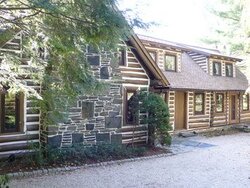As I determine which stove to buy I am also preparing my house for it's arrival.
Hearth pads and R factor.
The Englander 30 R 1.5. To keep it a low profile and reduce the tripping hazard I would go with 1" air gap at 1.43 R, 1/2" durarock and 1/4" tile. That combined puts me over 1.5R.
I just read the Lopi liberty and it simply says non combustible floor equaling .018"(26) gauge.
For that I could just lay in ceramic Tile after I router in a recessed area to make it perfectly flush.
Likewise I see not R value for the last choice, Jotul f600.
Why the big difference between two similar stoves, the Lopi and Englander? It there a bottom heat shield on it to lessen the heat transfer? Same with the Jotul. Is having a two inch high hearth pad the big drawback to the Englander?
Checking on woodland direct hearth pads they only have R-values up to 1.4. They don't even make one that can handle the Englander.
Hearth pads and R factor.
The Englander 30 R 1.5. To keep it a low profile and reduce the tripping hazard I would go with 1" air gap at 1.43 R, 1/2" durarock and 1/4" tile. That combined puts me over 1.5R.
I just read the Lopi liberty and it simply says non combustible floor equaling .018"(26) gauge.
For that I could just lay in ceramic Tile after I router in a recessed area to make it perfectly flush.
Likewise I see not R value for the last choice, Jotul f600.
Why the big difference between two similar stoves, the Lopi and Englander? It there a bottom heat shield on it to lessen the heat transfer? Same with the Jotul. Is having a two inch high hearth pad the big drawback to the Englander?
Checking on woodland direct hearth pads they only have R-values up to 1.4. They don't even make one that can handle the Englander.



